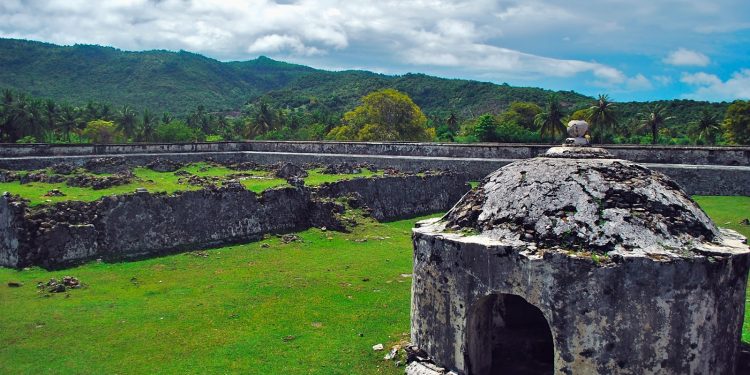Aceh does not only keep a history of the triumph of Islamic civilization during the Aceh Sultanate.
Long before Islam entered the life of the Acehnese people, Hinduism had already developed in society.
One of the silent witnesses of the golden age of the Hindu kingdom in Aceh is Indra Patra Fort which is located in Ladong Village, Masjid Raya District, Aceh Besar District.
Indra Patra Fort consists of the main fortress measuring 4900 square meters and three other forts, two of which have been destroyed.
This archaeological site was founded around 604 AD by the son of King Harsya who ruled India, who fled from the pursuit of the Huna Nation.
The existence of this fort is a historical legacy regarding the process of the entry of Hindu influence from India to Aceh. It is estimated that at that time, the Hindu Kingdom, Lamuri, began to develop in the North Coast area of Aceh Besar.
This fort is one of the three forts that mark the triangle area of the Hindu kingdom of Aceh, namely Indra Patra, Indra Puri, and Indra Purwa.
Archaeological expert Repelita Wahyu Oetomo, from the Medan Archeology Center, in his paper entitled ‘Lamuri Has Islam Before Pasai’ revealed, architecturally, some parts of the fort still have pre-Islamic characteristics of the building motif.
This can be seen, among others, in the two wells in the main fort area which are shaped like stupas. In the aspect of functionality, this fort had developed so that it was still used until the time of Sultan Iskandar Muda of the Aceh Sultanate.
During the Sultanate of Aceh, this fort played a major role as a line of defense against the Portuguese. This fort was taken from the Portuguese by Darmawangsa Tun Pangkat (Iskandar Muda).
During the reign of Sultan Iskandar Muda (1607-1636 AD) this fort, along with Inong Balee Fortress, Kuta Lubok Fort, and several other forts became the center of Aceh’s defense, especially in blocking attacks from the sea. The position of the fort facing Inong Balee Fortress across the east of Krueng Raya Bay played a strategic role in preventing the Portuguese fleet from entering Aceh through this bay.
One of the uniqueness of this fort lies in its solid construction. The strength of this fort is formed by its constituent structure made of mountain boulders which are firmly attached to one another. The secret lies in the dough that holds the mountain rock chunks together.
The dough is made from a mixture of lime, collision of shells, clay, and egg white. The use of egg white as a building adhesive like this can also be found in several other ancient buildings in the archipelago such as the Borobudur and Prambanan temples.



